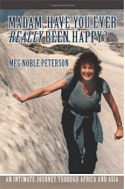I came back from my class reunion at Emma Willard School in Troy, NY, just in time to catch the Tony’s, my favorite award show. This year it was stupendous and I picked every winner. The only play I couldn’t get tickets for was Good People, which won a Tony for Frances McDormand, but that’s a pretty good track record.
Forgot to show you a photo of Scott Buck and me in front of the marquee of Million Dollar Quartet, which I mentioned in my May 14 blog. Dynamite show from last year’s picks.
I was thrilled that my old neighbor, Norbert Leo Butz won for the best actor in the musical Catch Me If You Can, a must-see, which I saw with another old friend from Florida, Barry Hamilton. And nothing topped the revival of The Normal Heart, Larry Kramer’s watershed drama about AIDS, which I saw with my son, Christopher, in 1985. The play starred Ellen Barkin and John Benjamin Hickey, who won Tony’s, as well as a very moving, powerful Joe Mantello.
A week later I visited the Wyman-Kelly family in West Hartford, CT, and was treated for my birthday (you didn’t know I had a birthday? You certainly must have pegged me as a Gemini by now!) to an excellent revival of August Wilson’s Gem of the Ocean at the Hartford Stage. This was one of my favorite venues when I lived in Sherman, CT 18 years ago.
The season came to an end for me with the revival of Tom Stoppard’s Arcadia, a play about the relationship between past and present, order and disorder, and the certainly of knowledge. It’s also a mystery. I suggest you read it before you see it. I finally did, having been mystified when I first saw it in 1993. Stoppard is my favorite English playwright. His use of word play and dialogue are unsurpassed, except, maybe, by Shakespeare.
I’m on my way to the Mt. Laural Autoharp Gathering (MLAG) in Newport, PA, and then on to New Hampshire and my beloved Lake Winnipesaukee. A happy, “cool” summer to you all!

















